Joseph Campbell, the Monomyth, and Superman
Applying the 12 Stages of the “Hero’s Journey” to Superman: Birthright
—by Nathan on November 10, 2022—

Joseph Campbell, a late writer and professor of literature, developed the monomyth, or the “Hero’s Journey,” what Campbell saw as an overarching outline shared by narratives through the centuries and around the globe. His book, The Hero with a Thousand Faces, segments the monomyth into 17 stages, later reinterpreted and trimmed to 12 by Christopher Vogler.
Campbell’s development of the monomyth has proved essential to fiction writing; perhaps most famously, George Lucas heavily utilized the format when developing the original Star Wars trilogy. And Lucas is not alone—the internet is awash with articles and blogs detailing how The Matrix movies, the Harry Potter novels, Watership Down, and various Disney films were all inspired, in some fashion, by Campbell’s theory.
In examining each of the “Hero’s Journey” stages, we will apply Campbell’s monomyth to Mark Waid and Leinil Francis Yu’s Superman: Birthright comic series. This early 2000s retelling of Superman’s fabled origin offers practical insight into how Campbell’s “Hero’s Journey” can be utilized.
Stage 1: The Ordinary World
In this initial stage, the writer introduces their protagonist and the world they inhabit. The writer establishes a status quo, the life our hero lives prior to any supernatural shenanigans, mythic quests, or suspicious strangers.
Superman: Birthright starts in medias res, with an adult Clark Kent halfway around the world. He knows his powers, but he’s not yet embraced his role as a hero. He’s finding himself as a journalist, with little to no thought of ever donning a cape or calling himself “Superman.”
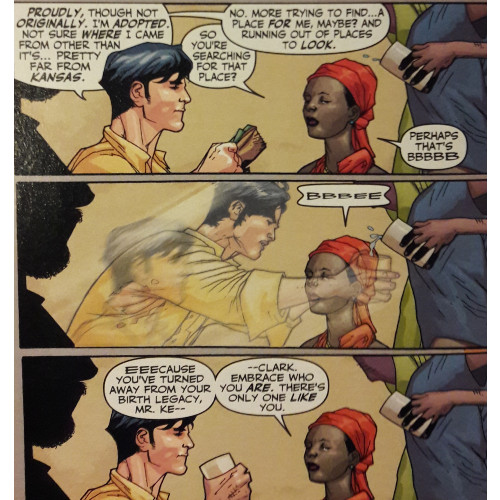
Stage 2: Call to Adventure
The second stage sees our hero’s life interrupted, their world turned upside down. The writer introduces a change to the previously accepted status quo which offers the hero a chance to remove themselves from the safe and comfortable. Oftentimes, this happens against the protagonist’s will.
In Birthright, a close friend of Clark’s is murdered, a man Clark is unable to save. This reinvigorates Clark’s mindset towards his powers and purpose. He’s stopped an accident here or there, stepped in to quash conflict when he had no other option. But to use his powers full-time? To embrace his Kryptonian heritage rather than hide it? He understands the good he could accomplish…and the evil, the losses, he could prevent.
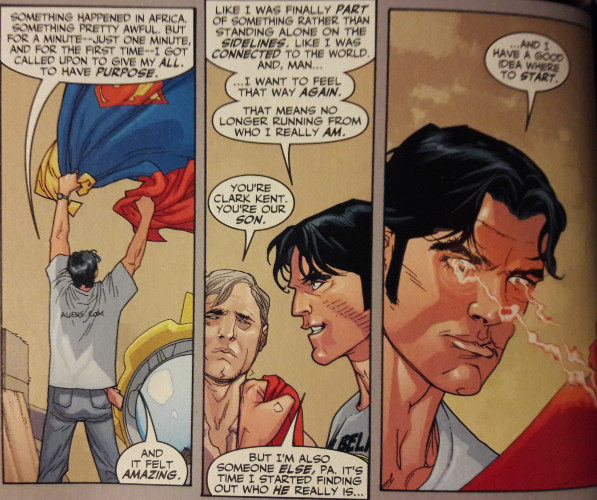
Stage 3: Refusal of the Call
Despite the generally unexpected jolting in Stage 2, our hero tends to be a tad reluctant. The writer must validate the struggle and make the decision difficult…ultimately, they hand their hero a choice which asks them to abandon the comfortable and ordinary for something greater. Also ultimately, the hero eventually relents and accepts the quest.
Even prior to his friend’s death, Clark believes he’s failing himself by not using his full potential. Yet, he mentally counters, he’s alienated himself from communities when using his powers previously. Clark wrestles with whether the cost of publicly using his abilities is worth the fear he could create as an individual with incredible powers.
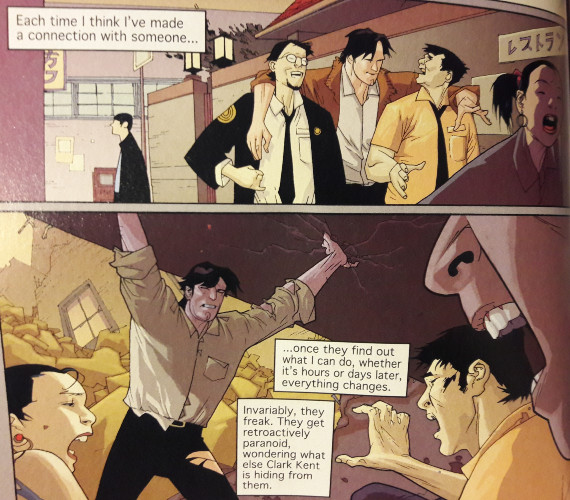
Stage 4: Meeting the Mentor
The hero, accepting their fate, comes across a wise, perhaps wizened guide. The mentor equips the hero for the long journey ahead. Often, a writer will use a mentor to offer an experienced viewpoint, perhaps as a grizzled veteran of questing themselves.
Clark has two mentors—his surrogate parents, Ma and Pa Kent. Ma dives in headfirst, sewing Clark his iconic costume and fretting over his secret identity. Pa’s support is initially reluctant, worried his son will get lost in his superhuman persona and forget his Smallville roots. His concern reflects the humanity he’s instilled in his son and the moral foundation with which Clark serves the world.
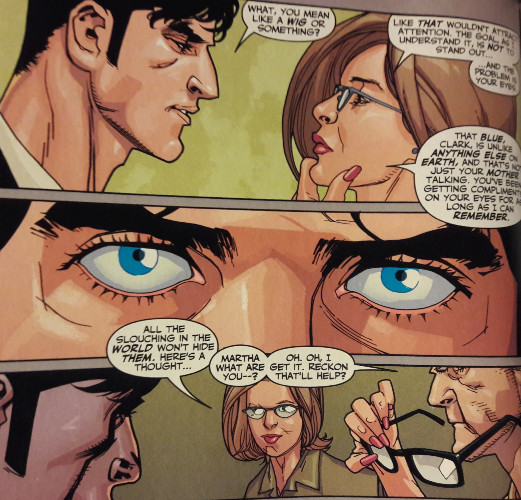
Stage 5: Crossing the Threshold
Convicted and prepared, the hero stands on the cusp of adventure. Here, the writer shoves them into the unknown, perhaps where the hero learns how big and chaotic the world around them truly is or how different it is from their home or community.
For Clark, he enters gleaming Metropolis and learns how to pivot between identities. He makes his first, headline-grabbing appearance as Superman, contrasting his heroics with a humbling portrayal as a bumbling Clark Kent. He encounters mogul Lex Luthor, discovering that the power from a yellow sun can sometimes be outmatched by the power of wealth.
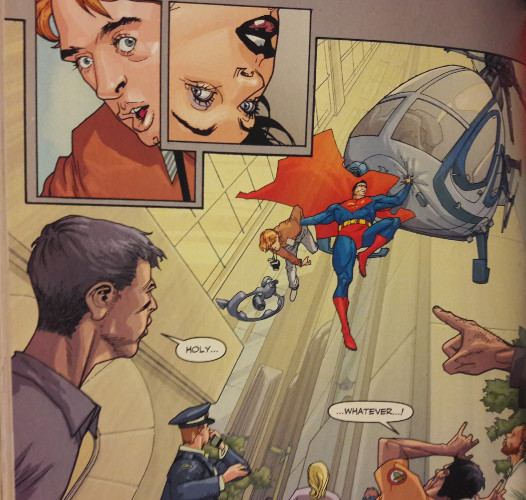
Stage 6: Test, Allies, and Enemies
We have now entered the second act of the “Hero’s Journey,” with the adventure in full-swing. With the quest’s parameters established, the writer now carries their hero through the world. Supporting cast members, enemies and allies alike, are introduced. The hero endures danger, encounters evil, faces injustice. They learn which limitations they can grow beyond.
In Metropolis, Superman encounters both Lois Lane and kryptonite for the first time, as well as public dissension when Luthor exposes his alien origins. A ploy by Luthor to convince Metropolis that Superman is a terrorist turns Clark homeward, where he receives some much-needed advice from his parental mentors.
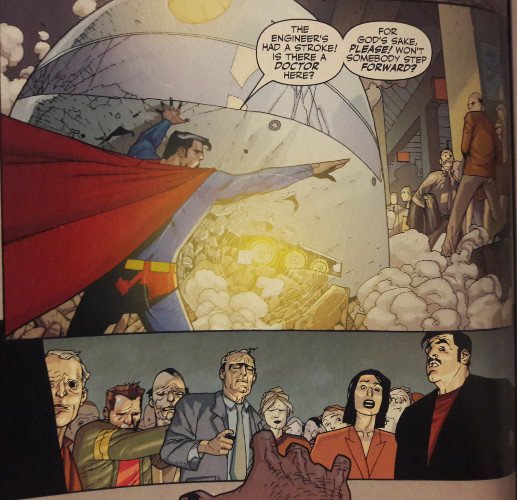
Stage 7: Approach to the Inmost Cave
The seventh stage of the monomyth gives the hero time to reflect inwardly (in the “inmost cave”)—and, by extension, gives the writer an opportunity to showcase the hero’s growth. The characters regroup, analyze conflicts and defeats, maybe formulate a plan to end the villain’s reign of terror.
In Birthright, Clark is reminded of his prior friendship with Luthor when they were young men living in Smallville. The scenes allow writer Mark Waid to juxtapose both men, as well as create retroactive character development for Luthor. Clark understands his enemy’s mindset better before returning to Metropolis.
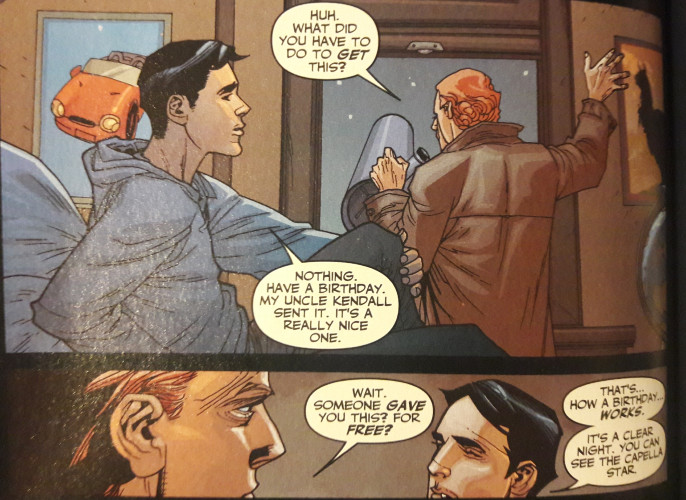
Stage 8: The Ordeal
A challenge unlike any other brings our heroes to their knees. Perhaps it’s a starling betrayal. Perhaps it’s a plan gone sideways. Perhaps a good friend dies. Some conflict, greater than any previous peril, asserts itself and leaves our heroes feeling defeated and broken.
Back in Metropolis, Superman faces an apparent alien invasion intended to discredit him completely. He confronts Luthor directly, learning how deeply Luthor has turned the city against the Man of Steel.
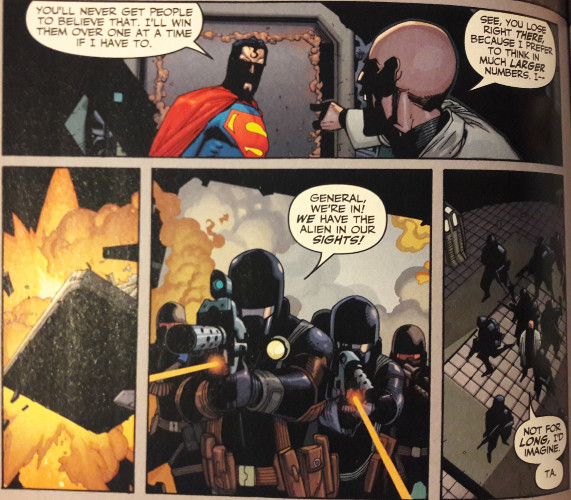
Stage 9: The Reward
Our heroes have hit their lowest point. The writer now gives them the motivation to push past the darkness and embrace whatever faint hope lingers at the end of the tunnel. They need an oasis in the middle of a desert or validation their journeying has not been in vain.
Superman defends Metropolis against the supposed invasion, proving himself to the people despite Luthor’s machinations. His actions win over the city’s trust, eradicating doubts and validating his prior heroic efforts.
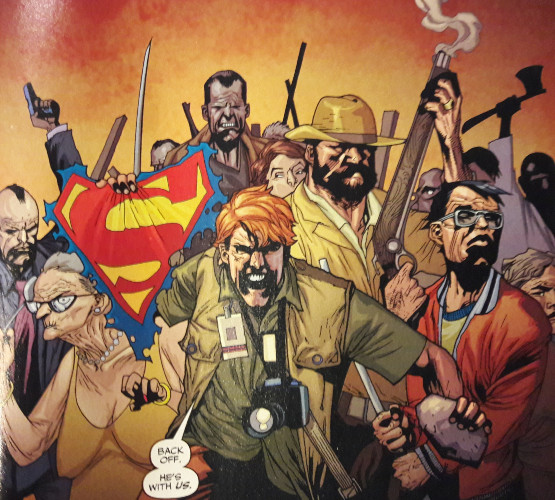
Stage 10: The Road Back
The “Road Back” is a lead up to the climax or final showdown. The name offers the apparent hope that the hero can return to the status quo with ease but encounters unexpected resistance or unresolved conflict.
Unbeknownst to Superman, Luthor has kidnapped Lois Lane and rigged his “alien invaders” to self-detonate. Superman disables and saves these former foes before facing down the barrel of Lex Luthor.
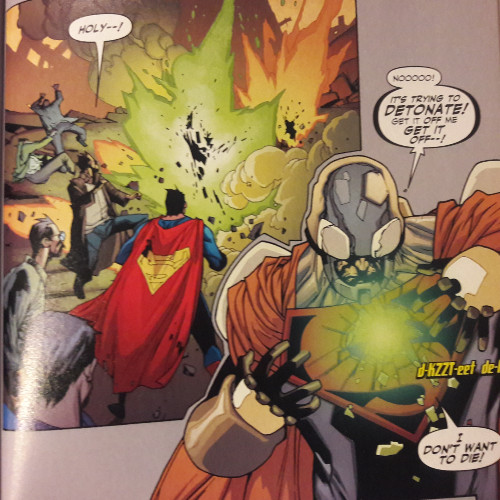
Stage 11: Resurrection
With all other obstacles safely out of the way, the hero can at last face their arch-nemesis. All the tension the writer has constructed builds to this moment—a showdown, a last test, a showcase of all the hero has learned throughout the previous stages.
Superman confronts Luthor in a kryptonite-drenched room as the billionaire villain tries to contact a past version of Krypton. The two duke it out, mano-a-mano, with Superman finally overcoming his foe and bringing him to justice.
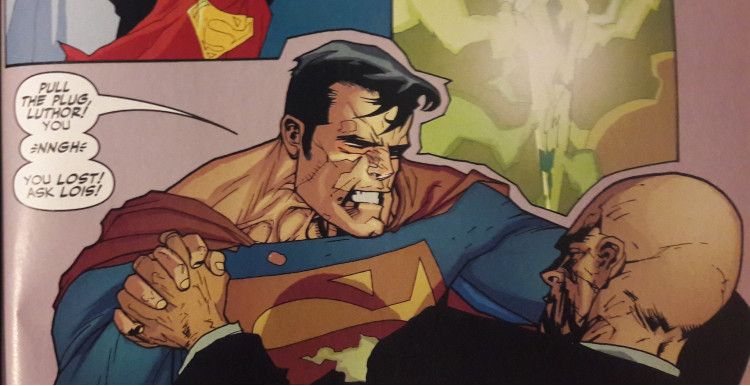
Stage 12: Return with the Elixir
This final stage sees your hero—perhaps bloodied, but unbroken—rise from the ashes of conflict, renewed. Finally, they return to the old world, wiser, stronger, maybe with a mystical boon or relic (the “elixir”) to aid their fellow folk. The adventure has left its mark, physically or even spiritually, and though the landscape is once again familiar, the hero sees it differently.
In defeating Luthor, Superman is given a glimpse of his homeworld. A piece of the past denied him is revealed, and the questions he carried about his heritage are answered. He also reclaims his symbol, with Lois Lane confirming that Metropolis will always see the S on his chest as a sign of hope.
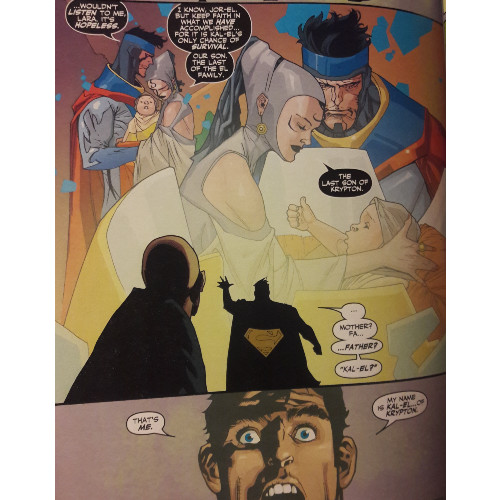
Background info
Based on initial research, I considered a variety of phrases while digging into Joseph Campbell’s “Hero’s Journey,” including the following:
• “Joseph Campbell”
• “Joseph Campbell” “hero’s journey”
• “Joseph Campbell” “monomyth”
• “Hero’s Journey stages”
• “Hero’s journey”
• “Monomyth”
Google offered various results, including links to helpful academic articles and sites (Such as “The Monomyth: The Hero’s Journey” at Grand Valley State University) but largely gave a wide selection of blogs and articles discussing Campbell’s theory and offering examples.
More specific search terms, such as:
• “Joseph Campbell” “George Lucas”
• “Joseph Campbell” “Star Wars”
• “Star Wars” “monomyth”
offered a narrower focus, specifically tethering Campbell’s theory to the Star Wars franchise. I discovered that utilizing a few comics-based terms (such as “Spider-Man” “Monomyth” or “Superman” “Monomyth”) offered even fewer results. “Joseph Campbell” and “Star Wars,” for example, delivered 158,000 Google results; “Joseph Campbell” and “Superman,” delivered 60,500.
Utilizing those key terms—“Joseph Campbell,” “Hero’s Journey,” “monomyth,” and “Superman”—I elected to describe Campbell’s monomyth through the lens of the Superman mythos. Other blogs and listicles I perused offered multiple fictional examples when discussing the stages of Campbell’s “Hero’s Journey” (such as The Chronicles of Narnia, The Lord of the Rings, or The Matrix); I wanted to weave an example through my entire post and decided to unpack a single story: the Superman: Birthright comic series.
Outline:
1) Introduction
a) Describe Joseph Campbell and Monomyth/Hero’s Journey
i) Who is Joseph Campbell?
ii) What is monomyth/Hero’s Journey?
b) Introduce concept of 12 stages to monomyth
c) Introduce example
i) Superman: Birthright
2) Stage 1: The Ordinary World
a) Explanation of stage
b) Application to Birthright
3) Stage 2: Call to Adventure
a) Explanation of stage
b) Application to Birthright
4) Stage 3: Refusal of the Call
a) Explanation of stage
b) Application to Birthright
5) Stage 4: Meeting the Mentor
a) Explanation of stage
b) Application to Birthright
6) Stage 5: Crossing the Threshold
a) Explanation of stage
b) Application to Birthright
7) Stage 6: Tests, Allies Enemies
a) Explanation of stage
b) Application to Birthright
8) Stage 7: Approach to the Inmost Cave
a) Explanation of stage
b) Application to Birthright
9) Stage 8: The Ordeal
a) Explanation of stage
b) Application to Birthright
10) Stage 9: Reward
a) Explanation of stage
b) Application to Birthright
11) Stage 10: The Road Back
a) Explanation of stage
b) Application to Birthright
12) Stage 11: Resurrection
a) Explanation of stage
b) Application to Birthright
13) Stage 12: Return with the Elixir
a) Explanation of stage
b) Application to Birthright